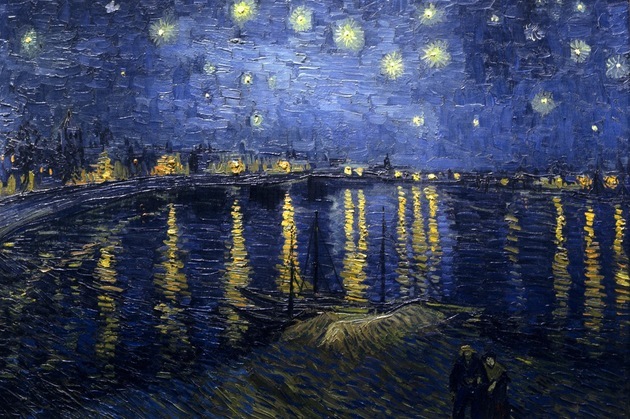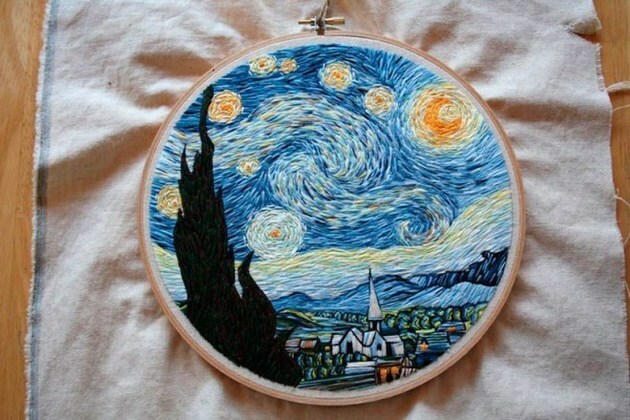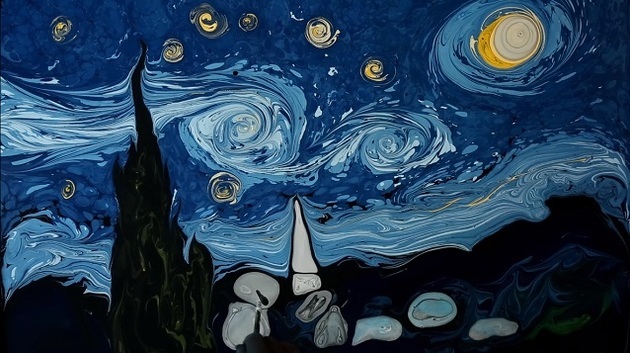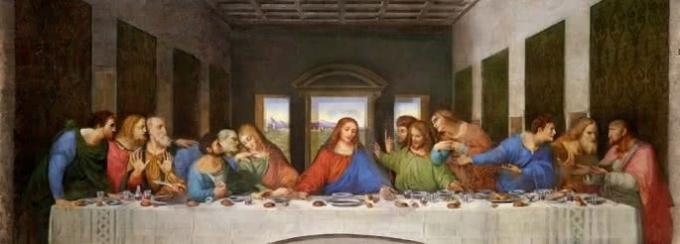the starry night is an 1889 painting by the Dutch artist Vincent Van Gogh. It was made using the oil on canvas technique, measures 73 x 92 cm and is currently at the Museum of Modern Art in New York (MoMA), in the USA.
The screen features a night landscape with a highlight of the sky and stars. There are also cypresses that rise to the firmament like flames of fire, mountains and a village.
Such work fits into the European avant-garde movement post-impressionist.

Detailed analysis of the work the starry night
The painting is emblematic because it presents great dynamism in the brushstrokes and an energy hitherto unknown, both in the artist's production and in the history of painting.
Van Gogh performed this work when he was willingly interned in the sanatorium Saint-Rémy-de-Provence, in France.
During his stay at the institution, the artist was not allowed to paint in his room where he slept, as there was a special room for that. Because of this, he makes the canvas using sketches, memory and imagination to reproduce the view from his bedroom.
Before producing the canvas—which would become one of his most famous works—Van Gogh wrote to his brother, Theo:
Looking at the sky through the window before dawn, I noticed that it was clear, nothing but a very large star, which could only be the Alva Star.
Through research, it was found that in that year and location the planet Venus (also called the Alva Star) was actually brighter and more apparent than usual. Therefore, it is likely that such a star was actually depicted in the painting.
We selected some areas of the painting for a more detailed analysis. Check out:

1. The stars

The painter abused the brightness to portray the stars.
Inserting them into intense swirls of luminosity - achieved using the colors yellow and white - Van Gogh manages to give the impression that the stars are moving in the deep blue of the sky.
2. The moon

The moon is portrayed as a powerful orange hue and a glowing halo that spreads across the screen like ripples in a raging sea. The star appears off center and adds a melting feel to the composition.
3. the light spirals

The sky appears in the work as a huge wave, which creates a sensation of dizziness and vertigo. We can see that the painter elaborates a stylized reproduction of the Milky Way.
4. the village

The grouping of houses appears on the screen in a shy way, almost pressed by the impressive force of the cosmos - represented by the firmament. A few yellow strokes indicate few lights on, a contrast to the energy of starlight.
The church tower presents a provocative and fragile attempt at a connection between heaven and human beings.
5. The valley

In this area of painting, Van Gogh represents the valley of Saint-Rémy-de-Provence. On the right, a cornfield is noticeable, noted by the presence of some golden highlights.
6. the cypresses

Cypresses are very interesting trees from a plastic point of view. Van Gogh appreciated these fluid forms and portrayed them in other works. Here, we notice a flaming character, almost like flames of fire licking the night.
Other Van Gogh paintings at night
Vincent Van Gogh prized the night and, in the last years of his life, he let himself be seduced by the theme.
At one point, he even stated:
I confess I don't know why, but looking at the stars always makes me dream.
Below, two works made by the artist using the same motto:


Who was Vincent Van Gogh?
Vincent Van Gogh was born on March 30, 1853, in Holland.
He became interested in painting in 1880, after becoming involved with religion and later suffering a crisis of faith when he came across the living conditions of the miners he had contact with at the time he preached the word.
He had a very fragile mental health, suffering numerous bouts of madness and depression. He found in art a way of emotional survival and dedicated himself to this passion for the rest of his life.
His style was despised by his contemporaries and even with an extensive production, he sold only one canvas in his lifetime.
Despite this, he later had a decisive influence on the development of the main artistic currents of the 20th century.
On July 27, 1890, already quite debilitated due to a psychological illness, the painter died 30 hours after shooting himself in the chest.
Van Gogh was a man of extraordinary impetus and through his art he managed to express his emotions, pains and feelings. We can say that he was really a genius.

Rereadings of the starry night
As a famous painting in the history of Western art, the canvas the starry night was very much reproduced by other artists. See below some reinterpretations:



Read more about other art movements:
- Impressionism
- Expressionism
- European vanguards



